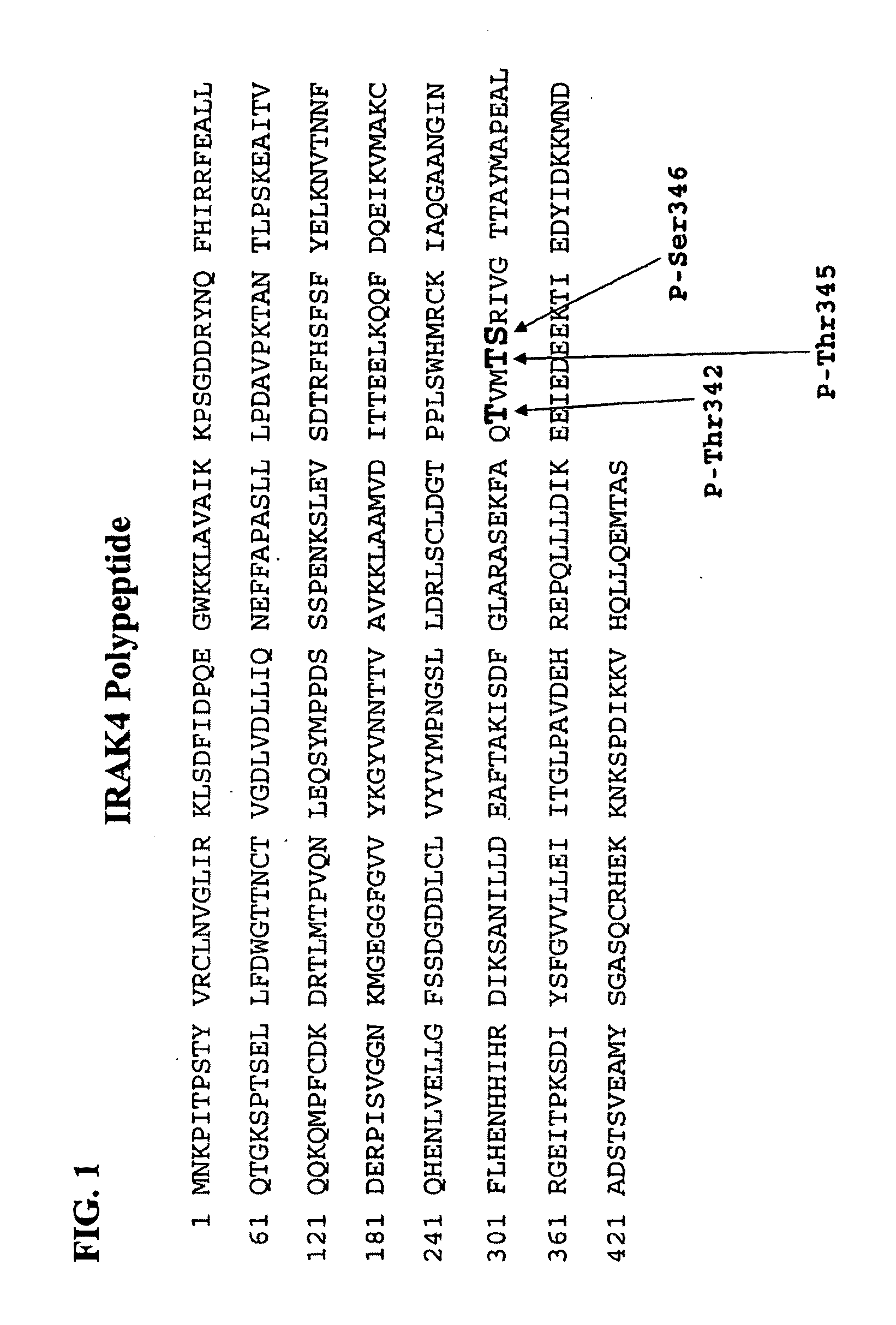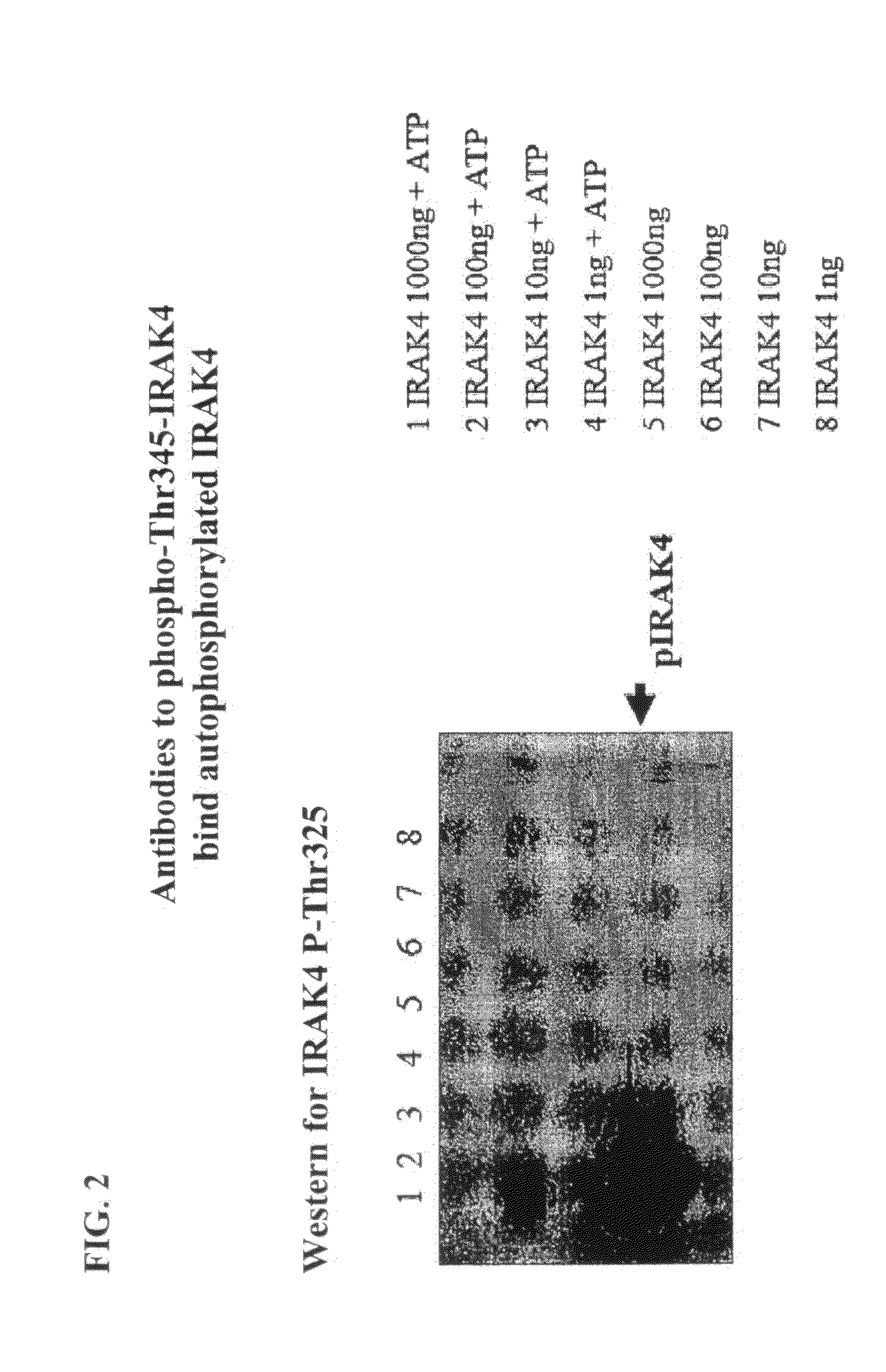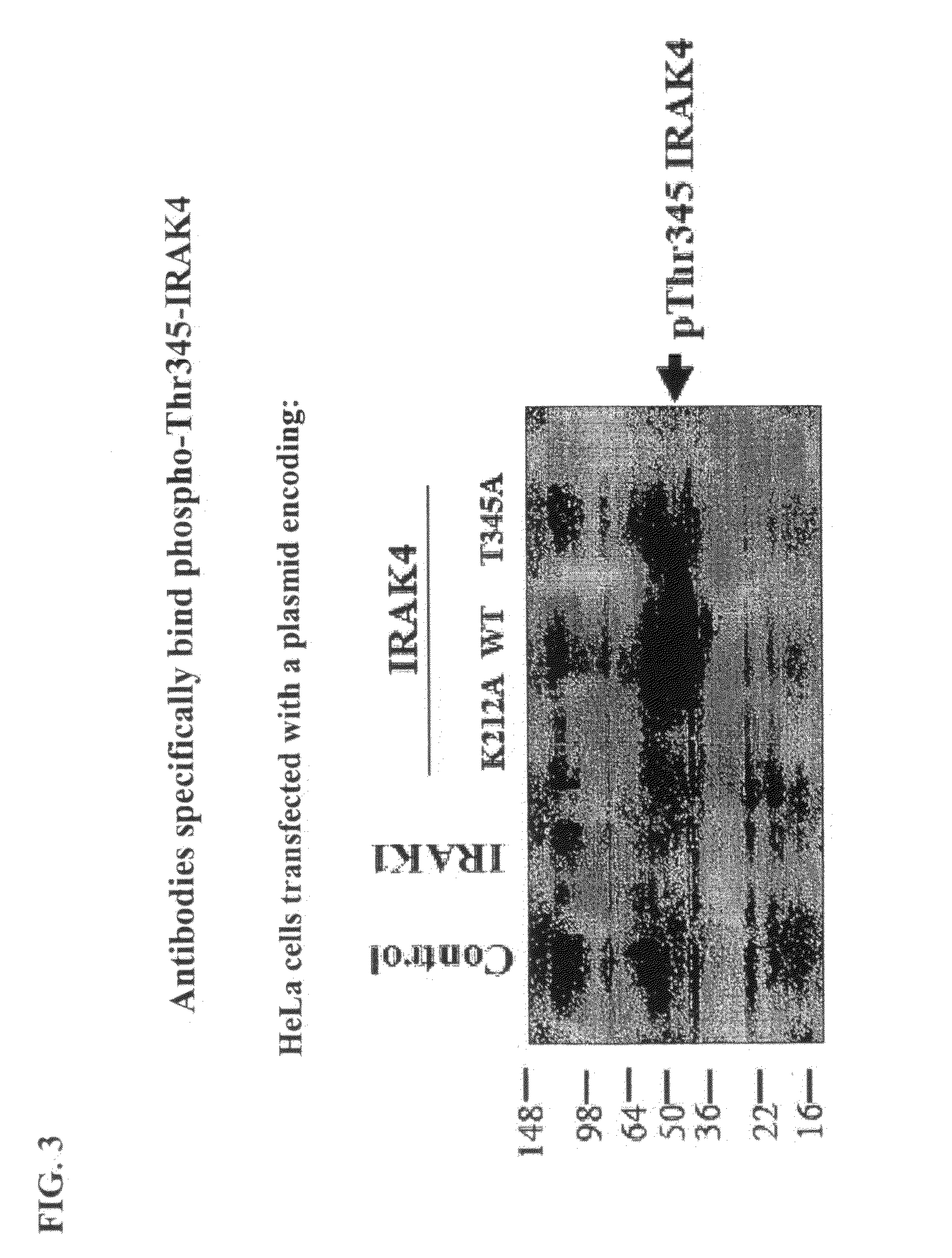Antibodies to Phosphorylated IRAK4
a technology of phosphorylated irak4 and antibodies, which is applied in the field of immunodeficiency and disorders, can solve the problems of inability to activate the nfb pathway, inability to produce inflammatory cytokines in response to tlr, and significant impairment in responding to other bacterial and viral challenges
- Summary
- Abstract
- Description
- Claims
- Application Information
AI Technical Summary
Benefits of technology
Problems solved by technology
Method used
Image
Examples
example a
Production, Purification, and Auto- / Trans-Phosphorylation of IRAK4 Kinase Domain
[0369]Construction of the wild type IRAK4 kinase domain. The wild type IRAK4 kinase domain (Thr-163 to Ser-460 of the full-length protein) was obtained by PCR amplification from a full-length IRAK4 template. The PCR products were digested with restriction enzymes NcoI and EcoRI and cloned directionally into NcoI / EcoRI-digested pFastBac HTA vector (INVITROGEN™, Carlsbad, Calif.) to produce a construct in which the sequence encoding the IRAK4 kinase domain is downstream of sequences encoding a hexahistidine tag (his-tag) and a TEV protease cleavage site. Standard protocols routinely practiced by those of ordinary skill in the art were used to transfect Sf-9 insect cells and to generate and amplify baculovirus stocks.
[0370]Construction of Wild Type and T342A, T345A, S346A, T342A / T345A, T342A / S346A, T345A / S346A, and K213A / K214A Mutants of Full-Length IRAK4.
[0371]A mammalian cell expression construct of wild-...
example b
Generation of Polyclonal Antibodies that Specifically Bind Phosphorylated-IRAK4
[0379]Polyclonal antibodies that specifically bind phosphorylated-IRAK4 were generated using rabbits immunized with phosphorylated IRAK4 peptide antigen comprised of the polypeptide sequence:
(SEQ ID NO:3)Cys-Lys-Phe-Ala-Gln-Thr-Val-Met-Phos-Thr-Ser-Arg-Ile-Val-Gly-Thr-Thr(SEQ ID NO:3)(or, CKFAQTVMPhos-TSRIVGTT )[0380]where “Phos-Thr” / “Phos-T” signifies a phosphorylated Threonine residue, particularly corresponding to phospho-Thr-345 in IRAK4. (Note: The first Cys residue is not native to IRAK4 and was introduced to facilitate conjugation of the peptide to Keyhole Limpet Hemocyanin (KLH) carrier protein.).
[0381]Rabbits were injected three times, at three week intervals, with approximately 250 micrograms of peptide antigen prior to a first bleed. Seven to ten days prior to a second bleed another immunization was performed. Overall, rabbits were immunized seven times to obtain sufficiently high titers of ant...
example c
Generation of Monoclonal Antibodies that Specifically Bind Phosphorylated-IRAK4
[0384]Methods for producing monoclonal antibodies are routinely practiced and well known in the art, as exemplified by numerous publications and laboratory manuals describing such procedures. See, for example, Kohler G, and C. Milstein, Continuous cultures of fused cells secreting antibody of predefined specificity, Nature 256: 495-497 (1975); Harlow et al., Antibodies: A Laboratory Manual, Cold Spring Harbor Laboratory Press, 2nd ed. (1988); Hammerling et al., in: Monoclonal Antibodies and T-Cell Hybridomas Elsevier, N.Y., 563-681 (1981); Howard et al., Basic Methods in Antibody Production and Characterization, CRC Press LLC, Boca Raton, Fla. (2001); and, J. D. Pound, Immunochemical Protocols, Methods in Molecular Biology, Vol. 80, 2nd Ed., Humana Press, Inc. Totowa, N.J. (1998).
[0385]Monoclonal antibodies that specifically bind phosphorylated IRAK4 were developed as described below. First, Balb / c mice w...
PUM
| Property | Measurement | Unit |
|---|---|---|
| dissociation constant | aaaaa | aaaaa |
| dissociation constant | aaaaa | aaaaa |
| dissociation constant | aaaaa | aaaaa |
Abstract
Description
Claims
Application Information
 Login to View More
Login to View More - R&D
- Intellectual Property
- Life Sciences
- Materials
- Tech Scout
- Unparalleled Data Quality
- Higher Quality Content
- 60% Fewer Hallucinations
Browse by: Latest US Patents, China's latest patents, Technical Efficacy Thesaurus, Application Domain, Technology Topic, Popular Technical Reports.
© 2025 PatSnap. All rights reserved.Legal|Privacy policy|Modern Slavery Act Transparency Statement|Sitemap|About US| Contact US: help@patsnap.com



